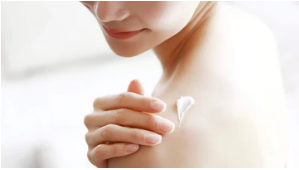
Moisturizing and hydrating needs – hyaluronic acid
In the consumption of online skincare chemical ingredients in 2019, hyaluronic acid ranked first. Hyaluronic acid (commonly known as hyaluronic acid)
It is a natural linear polysaccharide that exists in human and animal tissues. As the main component of extracellular matrix, it is mainly distributed in the vitreous body, joints, umbilical cord, skin and other parts of the human body, playing important physiological functions. Hyaluronic acid has good physical and chemical properties and biological functions such as water retention, lubricity, viscoelasticity, biodegradability, and biocompatibility. It is currently the most moisturizing substance found in nature and is known as the ideal natural moisturizing factor. Generally, a 2% pure hyaluronic acid aqueous solution can firmly maintain 98% moisture. Therefore, hyaluronic acid is widely used in the field of cosmetics.
Whitening Needs – Niacinamide
Niacinamide is the most popular whitening ingredient and a B3 vitamin. The mechanism of action of nicotinamide has three aspects: firstly, it accelerates metabolism and promotes the shedding of melanocytes containing melanin; secondly, it can act on the already produced melanin, reducing its transfer to surface cells; thirdly, nicotinamide can also promote the synthesis of epidermal proteins, enhance the skin’s own defense ability, and increase skin moisture content. However, low purity niacinamide can cause intolerance, so niacinamide in cosmetics has strict control over raw materials and impurities, resulting in higher standards in formula design and process.
Whitening demand – VC and its derivatives
Vitamin C (ascorbic acid, also known as L-ascorbic acid) is the earliest and most classic whitening ingredient, with whitening effects both orally and topically. It can inhibit melanin synthesis, reduce melanin, increase collagen content and improve skin color, reduce vascular permeability and inflammation, so it also has good effects on inflammation and red blood streaks.
Similar ingredients include VC derivatives, which are milder and more stable. Common ones include VC ethyl ether, magnesium/sodium ascorbate phosphate, ascorbate glucoside, and ascorbate palmitate. They are generally safe, but high concentrations can be irritating, unstable, and easily oxidized and decomposed by light damage.
Anti aging demand – peptides
Currently, the usage age of anti-aging products is continuously decreasing, and young people are constantly pursuing anti-aging. The well-known anti-aging ingredient is peptide, which is added to many high-end cosmetic brands’ anti-aging products. Peptides are proteins with a minimum number of 2-10 amino acids (the smallest unit of protein). Peptides can promote the proliferation of collagen, elastin fibers, and hyaluronic acid, increase skin moisture content, increase skin thickness, and reduce fine lines. Previously, L’Oreal announced the establishment of a joint venture with Singuladerm from Spain in China. The company’s flagship product, SOS Emergency Repair Ampoule, focuses on Acetyl Hexapeptide-8, a neurotransmitter blocking peptide with a mechanism similar to botulinum toxin. By inhibiting acetylcholine, it locally blocks the transmission of muscle contraction signals, relaxes facial muscles, smoothes wrinkles, especially facial expression lines.
Anti aging demand - retinol
Retinol (retinol) is a member of the vitamin A family, which includes retinol (also known as retinol), retinoic acid (A acid), retinol (A aldehyde), and various retinol esters (A esters).
Alcohol acts by converting into acid A in the body. Theoretically, acid A has the best effect, but due to its high skin irritation and side effects, it cannot be used in skincare products according to national regulations. So most of the skincare products we usually use add A alcohol or A ester, which slowly converts into A acid after entering the skin to take effect. A alcohol used for skincare mainly has the following effects: reducing wrinkles, anti-aging: A alcohol has the effect of regulating the metabolism of the epidermis and stratum corneum, effectively reducing fine lines and wrinkles, smoothing rough skin, and improving skin texture Fine pores: Alcohol A can improve skin quality by increasing cell renewal, preventing collagen breakdown, and making pores appear less obvious Acne removal: A alcohol can remove acne, remove acne scars, and external use can help treat conditions such as acne, pus, boils, and skin surface ulcers. In addition, A alcohol can also whiten and antioxidant properties.
Alcohol has good effects, but there are also drawbacks. On the one hand, it is unstable. When added to skincare products, the effect will weaken over time, and it will also decompose under prolonged light exposure, which can irritate the skin during the decomposition process. On the other hand, it has a certain degree of irritation. If the skin is intolerant, it is prone to skin allergies, itching, bursting skin, redness, and burning sensation.
Post time: Sep-14-2024



